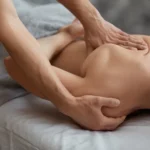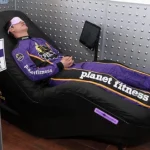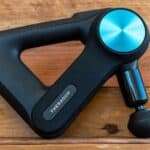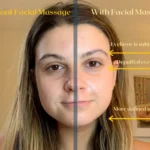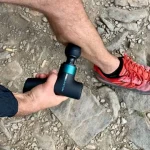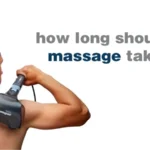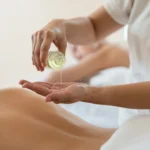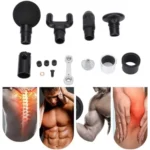Feeling tense, sluggish, or simply in need of a calming reset? Effleurage massage—a gentle, flowing technique rooted in Swedish massage—might be exactly what your body and mind need. In this guide, we’ll explore the healing benefits, key effleurage massage techniques, safety tips, common misconceptions, history, and how to get the most from this deeply relaxing experience. Whether you’re a massage therapist or someone looking for at-home relaxation, effleurage massage delivers restorative results.

Table of Contents
What Is Effleurage Massage?
Effleurage is a French term meaning “to skim” or “to lightly touch.” It refers to one of the most fundamental techniques in Swedish massage, involving smooth, gliding strokes that follow the contours of the body. These strokes are designed to warm up the muscles, stimulate circulation, and induce a state of relaxation.
Effleurage massage is typically performed using the palms, fingertips, or thumbs in long sweeping motions. It’s used both at the beginning and end of a massage session to prepare the tissue for deeper techniques or to soothe the nervous system after deeper work has been completed. Incorporating effleurage massage early in a treatment session can set the tone for physical and emotional comfort.
A Brief History of Effleurage
Effleurage has its origins in Swedish massage, a practice grounded in anatomy and physiology. It was popularized by Per Henrik Ling in the 1800s and continues to be used in modern practice across clinical, therapeutic, and spa environments (Cleveland Clinic).
The effleurage massage technique has its roots in Swedish massage, developed in the early 19th century by Per Henrik Ling, a Swedish physiologist. He incorporated scientific knowledge of anatomy and physiology into massage practice, combining movement therapy with therapeutic touch. Effleurage became one of the core techniques within this system.
Today, effleurage massage is recognized globally as a key massage technique used not only in therapeutic sessions but also in rehabilitation, sports therapy, spa treatments, and even palliative care. Its versatility and gentleness make it suitable for a wide range of conditions and populations.
Benefits of Effleurage Massage
The benefits of massage therapy are supported by numerous studies and health institutions. Effleurage, in particular, is known to help reduce stress, support circulation, and improve emotional well-being (NCCIH, Mayo Clinic).
Effleurage offers physical, emotional, and therapeutic benefits. Here’s a breakdown of what makes this technique so powerful:
Physical Benefits
🌿 Stimulates circulation: Encourages blood flow to bring oxygen and nutrients to muscles and skin.
🔁 Lymphatic drainage: Promotes the removal of waste and toxins from the body. 💡 This technique is often included in manual lymphatic drainage therapy for its ability to promote detoxification and reduce swelling.
💪 Eases muscular tension: Helps release minor muscle tightness and soreness.
💧 Hydrates skin: When performed with oil, it nourishes and softens the skin.
Psychological & Emotional Benefits
🧠 Reduces anxiety and stress: The repetitive, rhythmic motion is calming to the nervous system.
😴 Improves sleep: Regular sessions can help reduce insomnia by promoting relaxation.
😊 Enhances mood: Stimulates endorphin release and fosters a sense of well-being.
Therapeutic & Medical Uses
🤕 Chronic pain: Useful in treating arthritis, fibromyalgia, and migraines.
🧍♀️ Post-surgery recovery: Supports circulation and healing in non-acute phases.
🤰 Prenatal support: Often used in pregnancy massage to provide comfort and relieve tension.
By working across the physical and mental spectrum, effleurage massage creates a whole-body healing experience.

💫 Want to experience the full-body benefits of effleurage in action?
Discover how this foundational technique shines in Swedish massage—one of the most trusted styles for stress relief, circulation, and total-body relaxation.
👉 Read our expert guide to Swedish Massage →
Types & Techniques of Effleurage Massage
Effleurage techniques are versatile and can be adapted based on the massage’s purpose—whether it’s for relaxation, therapeutic release, or sports recovery. Below are the most common types used by both professionals and home practitioners:
Effleurage can be customized depending on the client’s needs and therapist’s approach. These effleurage techniques vary in pressure, hand position, and speed.
| Technique | Description | Best For |
|---|---|---|
| Superficial Effleurage | Light strokes used at the start or end of a massage to relax and soothe | Warming up, calming the nervous system |
| Deep Effleurage | Increased pressure, performed slowly to reach deeper tissues | Releasing muscle tension, improving circulation |
| Circular Effleurage | Small circles made with the fingertips or palms | Loosening knots, stimulating lymph flow |
| Alternating Hand Strokes | Hands alternate in long, overlapping motions | Creating fluidity and rhythm |
| Cross-Fiber Strokes | Diagonal strokes across muscle fibers | Breaking down adhesions and scar tissue |
| Palm Raking | Using the palms in a light combing motion | Relaxation and sensory stimulation |
Each effleurage massage technique is performed with intent and flow, always directed toward the heart to support circulation and lymphatic return. Integrating multiple effleurage massage strokes into a session builds both relaxation and therapeutic momentum.
Choosing the Best Massage Oils for Effleurage
The choice of massage oil can make a big difference in the glide, comfort, and absorption of effleurage strokes. Since this technique involves continuous contact and gentle motion, a non-sticky, medium-glide oil is ideal. Here are popular options:
🪔 Jojoba Oil – Closely resembles natural skin sebum and is non-comedogenic.
🪔 Sweet Almond Oil – A light, nourishing oil that absorbs slowly—perfect for longer sessions.
🪔 Grapeseed Oil – Great for sensitive skin and those prone to breakouts.
🪔 Coconut Oil (Fractionated) – Offers glide with antimicrobial benefits, though best for shorter sessions.
💡 Tip: For added relaxation, incorporate essential oils like lavender, ylang ylang, or eucalyptus—just a few drops mixed into a carrier oil.

How Professionals Use Effleurage Massage Techniques
Licensed massage therapists use effleurage massage techniques as a foundation in various therapeutic contexts:
🟢 Sports Massage: To warm up or cool down muscles before and after athletic activity.
🟢 Lymphatic Massage: Gentle effleurage strokes encourage lymph flow for detox and healing.
🟢 Spa Therapy: Paired with aromatherapy and heat for deep relaxation.
🟢 Geriatric and Palliative Care: Ideal for fragile clients due to its gentle, nurturing quality.
Effleurage is often tailored to the individual, adjusting speed and rhythm to support either stimulation or deep relaxation, depending on client goals.
How to Do Effleurage Self-Massage at Home
Even without a therapist, you can use effleurage techniques for self-care. It’s a simple, soothing way to ease daily tension and reconnect with your body.
🤲 Neck & Shoulders: Glide fingertips from base of neck down to collarbone. Apply light to medium pressure and use gentle circular motions at tight points.
🤲 Arms & Legs: Use open palms in long, upward strokes from wrist to shoulder or ankle to thigh. Always stroke toward the heart to support circulation.
🤲 Lower Back: Try a handheld roller, massage gun, or even a foam roller to apply light pressure along the lower spine and sides.
🤲 Feet: Use thumbs or knuckles to make long, slow strokes from heel to toe. Focus on the arch and ball of the foot for deeper relief.
🛠️ Massage balls, foam rollers, and percussive devices can mimic effleurage if used with care and rhythm.
💡 To avoid strain, use a mirror for visibility, take your time, and never work over bruised or injured areas. A 5–10 minute session a few times a week can significantly improve your sense of calm and bodily comfort.
⚠️ Safety Guidelines & Contraindications
While effleurage massage is generally safe, always observe these precautions:
Avoid Effleurage If:
🚫 There are open wounds, infections, or rashes
🚫 You have deep vein thrombosis, varicose veins, or blood clots
🚫 A fever or contagious illness is present
🚫 There’s severe osteoporosis or unhealed injury
Safe Practice Tips:
🧼 Sanitize hands and tools
🧤 Use gloves if necessary in clinical settings
🪑 Maintain good posture if giving a massage
🗣️ Communicate during the session for comfort and safety
💡 Common Misconceptions
“It’s too light to be effective.”
Effleurage might feel gentle, but it has deep effects on circulation and the nervous system.
“Only professionals can do it.”
While training enhances results, even beginners can practice safe, effective effleurage techniques at home.
“It doesn’t help chronic issues.”
When used regularly, effleurage massage supports mobility, pain relief, and long-term tension release.
❓ Effleurage Massage FAQs
How often should I receive effleurage massage?
1–3 times weekly, depending on stress or muscle tension levels.
Can I perform effleurage on myself?
Yes, especially on arms, legs, neck, and feet. Use oils and tools to enhance the experience.
Is effleurage safe during pregnancy?
Absolutely, especially in the second and third trimesters. Avoid the lower abdomen and use light pressure.
What tools enhance an effleurage massage session?
Massage oils, hot towels, handheld rollers, soft brushes, and aromatherapy.
Can it help with lymphatic drainage?
Yes—gentle strokes aid lymph movement and detoxification.
What are the 5 basic strokes of effleurage?
Long gliding strokes, circular strokes, alternating hand strokes, cross-fiber strokes, and feather-light stroking.
What is the difference between effleurage and petrissage?
Effleurage uses long strokes for surface layers and relaxation; petrissage involves kneading to work deeper tissues.
What are the psychological effects of effleurage?
It reduces anxiety, calms the nervous system, boosts mood, and enhances overall well-being.

📌 Final Thoughts: Why Effleurage Deserves a Spot in Your Wellness Routine
Effleurage massage is more than just a technique—it’s a gateway to relaxation, healing, and body awareness. Whether you’re easing soreness, improving circulation, or simply looking to unwind, this gentle method delivers.
Its accessibility means you don’t need a full spa setup to experience its benefits—just a few quiet minutes, your hands, and perhaps a bottle of oil. And when in doubt, booking a professional session ensures you receive customized care that supports both physical and emotional wellbeing.
By learning or receiving the effleurage massage technique, you’re embracing one of the most intuitive and beneficial forms of therapeutic touch.
👉 Explore our guides on Swedish massage basics, self-massage tips, or best massage oils for beginners to continue your journey.
📖 References
- Effleurage Massage: Stroking to stimulate healing – Pain Science
- Effleurage Massage Technique – Massage Mag
- Swedish Massage Therapy – Cleveland Clinic
- Massage therapy: What you need to know – National Center for Complementary and Integrative Health (NCCIH)
⚠️ Disclaimer:
This article is for informational purposes only and does not constitute medical advice. Always consult with a licensed healthcare provider or certified massage therapist before beginning any new treatment, especially if you have pre-existing health conditions or concerns.


